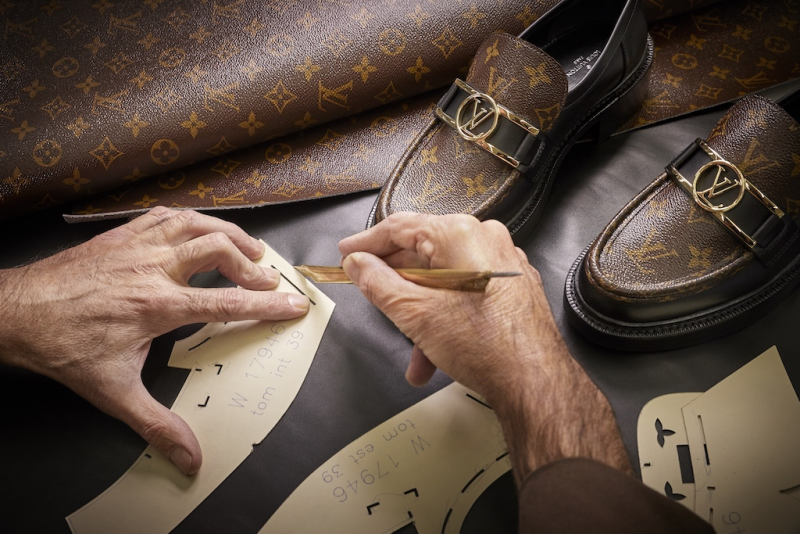Having been in the industry for nearly a decade, I’ve seen how it has adapted over time. Just a decade or two ago, all that mattered was exclusivity, one-upmanship, and ostentatious grandeur. Today, it has evolved to encompass so much more.
SEE MORE: Three e-commerce trends set to dominate in the Year of the Tiger in Southeast Asia

No matter how the concept of luxury evolves, there are core values that stay true. Luxury is time, craft, and heritage. It is incredible workmanship, immense attention to detail, and mastery that spans generations. Its savoir faire (French for ‘know-how’) exemplified, in knowing how to use all the above to create something that lasts a lifetime.
The last two years have served as a catalyst for immense change across the globe. According to the 2021 Luxury Goods Worldwide Market Study by global management consulting firm Bain & Company, 2021 marked the turn of the Twentennial, where key changes for the next 20 years for the global luxury market have been fast-forwarded. Consumer behaviors and touchpoints have been upended while markets grow more concentrated.
Brands across industries have had to make sharp pivots, but the best luxury brands have been able to successfully embrace the change. Here are three key ways brands have done so.
Create at-home experiences
As the world adjusts towards a new normal where people spend more time at home, brands have had to rapidly change to meet people where they’re at. In particular, brands dealing in fine wines and spirits have had to find novel ways to bring drinking experiences — usually enjoyed in bars and tasting rooms — into homes. Diageo brought the cocktail bar experience to people with its World Class Spirits Cocktail Kits, complete with award-winning liquids, ingredients, and instructions, so aficionados could still appreciate their favorite cocktails.

Pernod Ricard did something truly unique with their highly sought-after annual launch of the Dream Cask. It was released exclusively through an online ballot hosted on its members’ club, The Birdhouse, bringing in-person auctions to homes. Dom Pérignon also went online, for the launch of their collaboration with Lady Gaga, but took immersion one step further by creating a VR experience. In their virtual world was a grand crystal palace where people could explore the champagne collection, artwork, and more.
Embrace a digital transformation
Luxury fashion is a highly innovative industry, but it has also been notoriously slow in adapting to an increasingly digital world. However, over the past two years, many fashion houses have gone full throttle in their digitalisation efforts. Beyond optimising the e-commerce experience, brands are experimenting with interactive and immersive technologies.

While everyone was escaping to remote virtual islands via the popular video game, Animal Crossing: New Horizons, Valentino brought their runway collection in-game and made it available in pixel form. Valentino is not alone in transporting their brands into virtual worlds. Louis Vuitton and Burberry have partnered with games like League of Legends and Honor of Kings. Balenciaga went beyond collaborations and created their own game, Afterworld: The Age of Tomorrow, to showcase their Fall 2021 collection. This effort was dubbed “a quantum leap for fashion” by Vogue.
Expand on values
Luxury home décor has grown exponentially over the last few years. As people spend more time at home, they are reevaluating every square-inch. And with this reevaluation, consumers are seeking more environmentally conscious options.

Some home décor brands have matched this desire by expanding on the value they bring through their products. Beyond craft and comfort, brands are incorporating sustainability into their design. Celebrated Italian furnishing brand, Kartell, released a new edition of their iconic Componibili, now made with recycled industrial materials. Other renowned furniture brands and designers like Pedrali, Eugeni Quitllet, and Odo Fioravanti debuted pieces made with recycled materials at Supersalone during Milan Design Week 2021.
SEE ALSO: 2022 Retail Trends: the next generation of shopping experiences
Ultimately, what is appreciated as luxury is highly relative, and changes with culture and the times. But the best luxury brands understand that change doesn’t mean letting go of their values. Change is an opportunity to continue their legacy and bring those values into the future.
Author: Rachel Carrasco, Founder at RACHE
Disclaimer: The views and opinion expressed in the article belong solely to the original author and do not represent the views, opinions and position of Retail in Asia.




